Does your organization provide services online? Are you aware of the Web Content Accessibility Guidelines (WCAG) and whether or not your services are compliant? It’s important to stay up to date on accessibility standards in order to avoid any potential legal repercussions, plus it can open more doors for your customers!
So how do you achieve this? Getting a WCAG audit on your website or software is a good start. However, there are some things to keep in mind to avoid gaps in conformance. Keep reading as we take a look at the potential advantages and pitfalls when pursuing WCAG compliance.
Top Reasons Why Companies Get An Assessment
-
Procurement Requirements: If you are attempting to partner with a government, educational, or other client that receives federal funds, and audit along with an independently prepared Voluntary Product Accessibility Template (VPAT) is an excellent way to show them how accessible your product is. Having a Conformance Report ready is a proven method of putting yourself ahead of other vendors vying for a contract.
-
ADA Compliance & Legal Mitigation: The legal landscape for accessibility is constantly changing. Over 2,000 lawsuits were filed in 2019 that pertain to accessibility. Allowing TestPros to perform an audit will allow you to assess your overall risk, and work with us to help mitigate that risk.
-
Verification & Regression Testing: You may already have a team that is responsible for accessibility of your product, but it is always a good idea to have trained professionals give it a second look.
- New Products: The most responsible reason is for getting an audit during the first phases of a new product. This way you ensure that you are accessible from the start. We highly recommend that you perform an audit early to avoid time and money later on.
We Are Here To Assist You
By submitting this form, you consent to TestPros, Inc. storing and processing your information to provide the requested services and communications. Privacy Policy
What is WCAG compliance?
WCAG compliance means that a website has been designed, developed and organized in such a way to meet the accessibility guidelines set forth by the Web Content Accessibility Guidelines (WCAG). These guidelines were created by the World Wide Web Consortium (W3C) to provide an international standard for ensuring web pages are accessible to people with disabilities.
The guidelines provide a set of conformance levels (A, AA and AAA), that specify the level of success a website has achieved for each accessibility aspect.
Level A is the minimum level of compliance, while AA and AAA represent increasingly higher levels of accessibility. Level AA is typically the requirement by laws and regulation.
WCAG 2.0 A/AA is required by government agencies and contractors. However, since WCAG 2.1 was released in June 2018, WCAG 2.1 AA has become the standard for websites and digital content.
WCAG 2.2, the most recent guidance, was released in October 2023 and is expected to become the next required standard in the coming years.


Certified &
Independent
What is WCAG used for?
To guarantee that everyone can enjoy a seamless online experience, WCAG guidelines are specifically designed to make websites accessible for ALL people. This includes making sure they’re navigable and usable by those who cannot use or see the mouse.
Benefits of complying with WCAG
- Improve User Experience
- Reach a wider audience
- Legal compliance
- Potential business opportunities
Is WCAG compliance required?
WCAG compliance is required for most websites, software applications and digital products in order to ensure that they are accessible for people with disabilities. A wide range of areas are covered in the guidelines, including:
- Website structure
- Navigation
- Text Formatting
- Color Contrast
- Audio/Visual Content
- Images
Download the WCAG 2.1 AA Guidelines PDF Checklist
This checklist is designed to assist developers, designers, and managers with understanding and complying with the WCAG 2.1 guidelines.
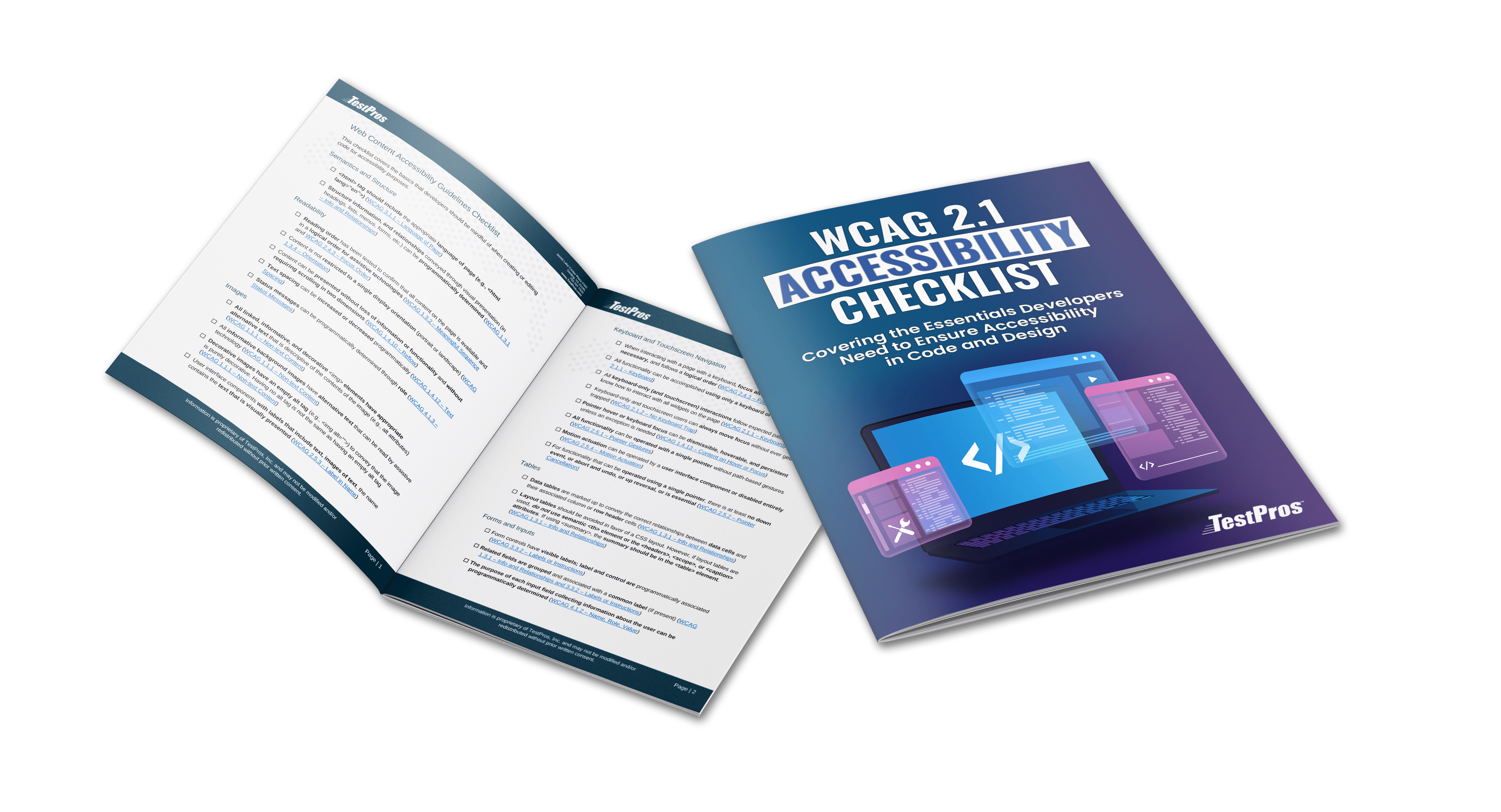
By submitting this form, you consent to TestPros, Inc. storing and processing your information to provide the requested content and communications. Privacy Policy
Need help with WCAG?
How To Comply With WCAG
Your business can ensure adherence to WCAG regulations by undergoing an accessibility audit. Through this process, all sections of your site or application are assessed to guarantee they meet the compliance standards of WCAG.
Conduct a web accessibility audit
A web accessibility audit is an assessment of how well your website and digital assets conform to the needs of people with disabilities and if you meet the Web Content Accessibility Guidelines (WCAG). The audit identifies areas that need improvement and provides recommendations to be more accessible.
Audits can be conducted by in-house staff or by third-party organizations, such as TestPros. These evaluations may be performed with a manual assessment, with automated tools, or both. For complete results it’s recommended to partner with an expert who can use a combination of manual and automated assessment methods.
Let’s go into more detail on these two options for your organization.
1. Use automated compliance-checker tools
Web accessibility evaluation tools that can be used to check for compliance with the Web Content Accessibility Guidelines. These tools can be helpful by scanning your website to find some (but not all) of the issues with a website or application. This can give you an idea of where you stand – but keep in mind this method alone leaves you vulnerable to missing requirements and gaps in conformance.
2. Partner with an accessibility consultant
An accessibility consultant is someone who specializes in helping organizations create accessible websites and software applications. Consultants, such as TestPros, can provide a variety of services, including manually testing for WCAG requirements. We help you identify all potential issues with your website or application and provide guidance on how to fix them.
The truth is automated tools are not enough
In general, compliance testing with assistive technologies and accessibility test tool software alone does not provide a complete evaluation. Automated tests can find some accessibility issues, but they are not able to find all of them. That’s why it’s important to work with an accessibility consultant who can combine a variety of testing methods.
Comparison: Automation vs Manual Testing
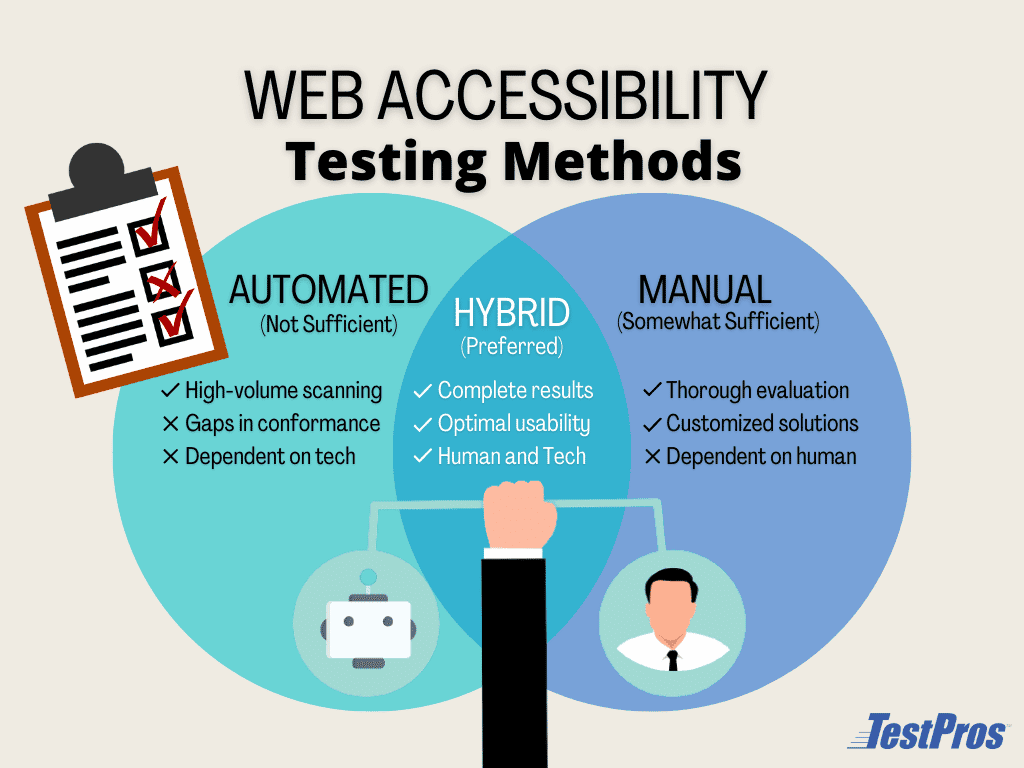
The Verdict:
Automated accessibility compliance testing can be a great way to begin an accessibility assessment. Automated tools can be helpful for identifying common accessibility issues (e.g., missing alt tags, color contrast issues, etc.) and we use them as part of every assessment.
Manual accessibility testing is vital for any website as automated tools can only test for 25-40% of the necessary success criteria. The most important issues to test for, such as logical ordering of content and proper semantics for screen readers, are often missed by automation.
See our article: Automated vs. Manual Testing
In addition to the lack of test coverage when using only automated tools, they are also more prone to false positives and negatives. For example, automated tool may detect that an alt tag on an image is present and as a result, not report it as a failure.
If we were to inspect the image more closely, we may find that the alt tag was not actually descriptive of the content in the image. As a result, a developer or platform manager may not be aware that their application is not compliant with WCAG 1.1.1 – Non-text Content.
TestPros Ensures Full Compliance
Working with a trusted accessibility expert is your best option. It’s important to combine automation tools with manual testing methods to conduct a full assessment. This way all success criteria are assessed.
TestPros tests to the standards, not to the tools. We use a best-practice approach that is defined by the Department of Homeland Security and their Trusted Tester Program.
We address all the WCAG standards and other applicable guidelines, including the following.
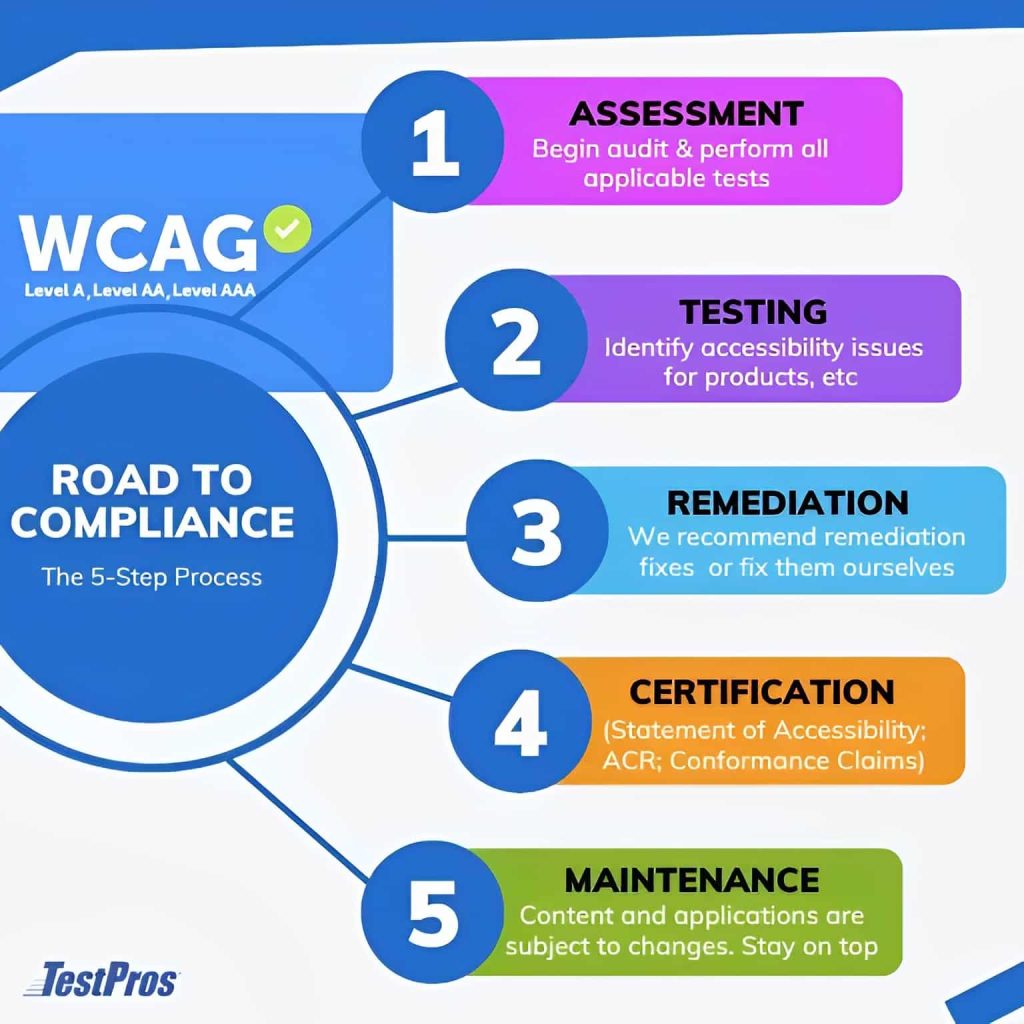
Trusted Clients




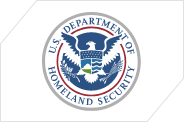

Reach WCAG Compliance with an Audit From TestPros
So, you want to ensure your website is WCAG compliant? We strongly recommend undergoing a full web accessibility audit with an experienced evaluation team like TestPros.
We’ve been helping organizations achieve WCAG compliance for over 30 years and have the experience and knowledge to help you too.
Our multi-step approach to digital accessibility includes:
- Project Assessments
- Testing – Websites, Products, Mobile, Artifacts (PDF/Word Documents PowerPoint Presentations), etc.
- Remediation – Custom and commercial off-the-shelf (COTS) software source code, artifacts
- Compliance – Documentation & Certification
- Ongoing Maintenance
- Training
Websites, software applications, mobile apps, and documents should undergo accessibility assessments before launching or any significant redesign. However, it is important to remember that content and applications are subject to constant changes.
TestPros can help you by implementing tools and processes to check the accessibility of your content on an ongoing basis. This will allow you to find issues such as broken links or other quality problems.
Contact us below for more information – we would be happy to answer any of your questions!What Challenges
Are You Facing?

FAQ
How much does WCAG compliance cost?
The cost of WCAG compliance can vary greatly depending on the complexity and depth of the website or application that needs to be upgraded. It is important to note that the cost can range from a few hundred dollars for small sites with minimal features, to several thousand dollars for larger sites with many features and elements. Generally, the more complex the site, the higher the cost.
Is WCAG a legal requirement in the US?
At this time, there is no specific legal requirement in the US that websites must meet WCAG accessibility guidelines. However, there are a number of laws and regulations which require WCAG compliance, including the Americans with Disabilities Act (ADA) and Section 508 of the Rehabilitation Act.
Businesses or organizations in the U.S. that must comply with these laws are required to conform to WCAG.
Is WCAG the same as ADA compliance?
No, WCAG and ADA compliance are not the same. The ADA is a U.S. law that mandates websites must meet its standards as laid out by the Web Content Accessibility Guidelines (WCAG). Making sure your website is in line with WCAG can help you comply with the ADA law and open up new opportunities to reach potential customers.
Do you offer services other than audits?
Yes, our consultants can provide your team with guidance to fix the issues. We also can assist you with video captions, as well as document artifacts like PDFs. For a full list, please visit our page here.



